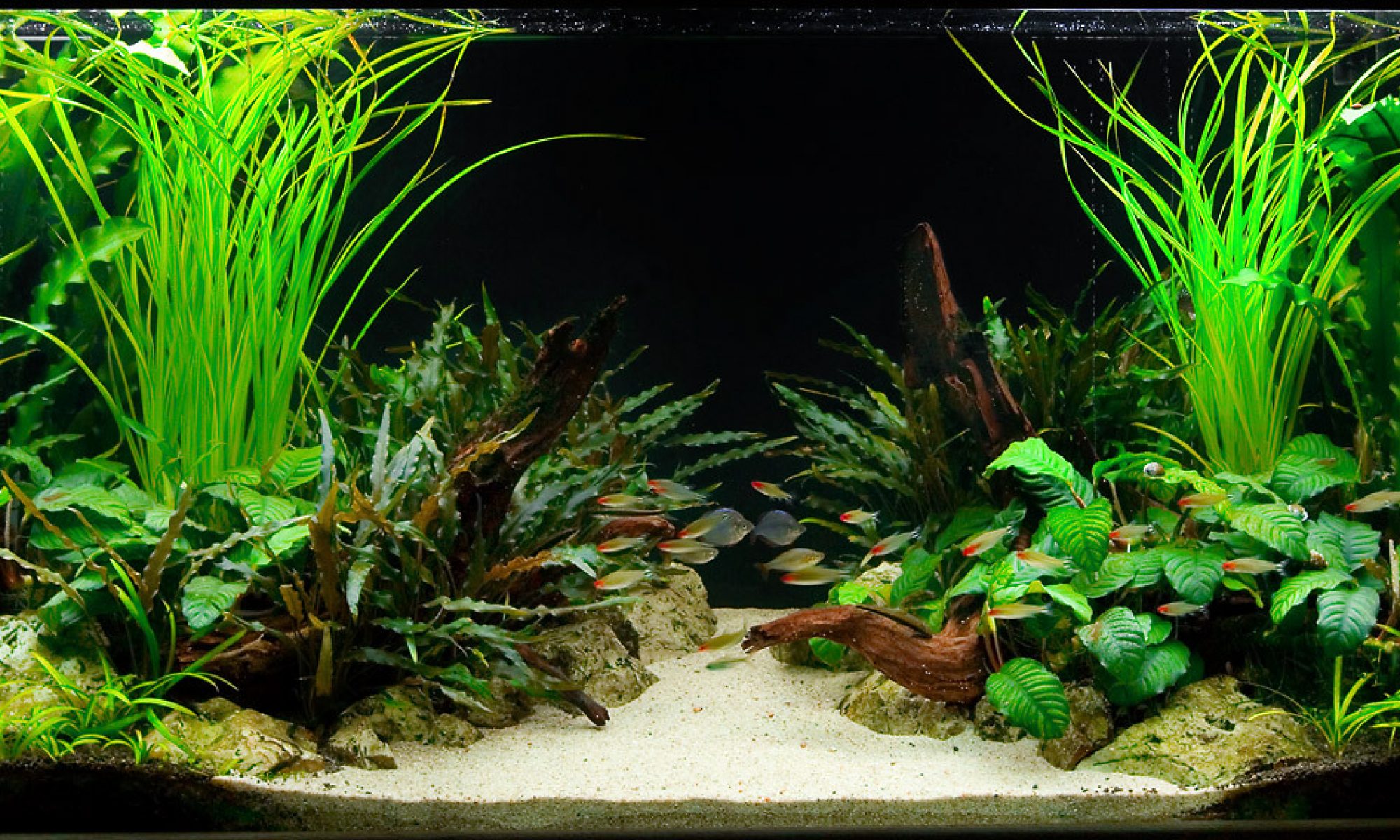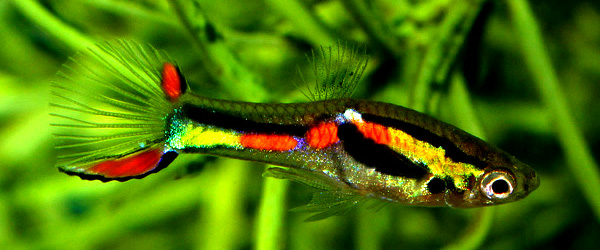Poecilia wingei, known to aquarists as Endlers or Endler’s livebearer, in the genus Poecilia, is a small fish native to the Paria Peninsula in Venezuela. They are proficient breeders and often hybridize with guppies.
Details
| Type | Livebearers |
| Family | Poeciliidae |
| Species | Poecilia wingei |
| Synonyms | |
| Origins | Paria Peninsula in Venezuela |
| Sexual Dimorphism | Males are highly coloured & with a gonopodium, females are a plain light grey/beige. |
| Length | 2.5 cm |
| Shoaling | No |
| Temperature | 24 - 28 deg C |
| Water parameters | pH 7.2 - 8.0, dH 12 - 25 |
Care
With their strikingly bright metallic colouration, Endler’s Livebearers make a beautiful addition to smaller planted aquaria. However, because of the close similarity to the Guppy (Poecilia reticulata), the two species must not be kept together as hybridization will occur. Hybridization of the two species is not desirable as the resulting fry are fertile and will dilute the gene pool. Endler’s Livebearers are known only from a small area in Venezuela where the water is typically greenish and shallow at around 15cm depth. These streams are surrounded by trees, which put much of the habitat into dappled shade at various times throughout the day. The fish graze on the substrate, aquatic vegetation and algae, moving around in large groups. Usually there are more females than males. This should be replicated in the home aquarium, ideally with 2 or 3 females to every male. The tank should be densely planted and include floating species which will help diffuse bright lighting. The water should be of a hard, alkaline composition. Endler’s Livebearers are best maintained in a species-only aquarium because of their diminutive size, although they can be kept alongside other tiny peaceful species which enjoy the same conditions. They will breed quite readily (see below) in a heavily planted tank, so keep an eye on stocking density. Wild Endler’s Livebearers are found in several different forms. The variety found in the Campoma lagoon (and immediate surroundings) is the ‘standard’ form and has a prominent comma-shaped black mark on the flanks. Although not currently listed on the IUCN redlist for endangered species, their natural habitat is said to be in much danger and some of the other fish known to live in the same lagoon have already disappeared. This means that it is of even greater importance that Endler’s Livebearer is not exposed to the Guppy (Poecilia reticulata), so as to preserve the species and keep it pure.Feeding
Flake, green flake, micropellets, and small frozen foods such as baby brineshrimp, daphnia, mosquito larvae and cyclops. Microworm is also a particular favourite. May nibble at some delicate fine-leaved plants, although damage should not be that noticeable, particularly if fast growing plant species are chosen.Breeding
Easy. Keep at least two females to every male amongst dense planting and the fish will do the rest! The male will transfer his milt into the female via his gonopodium, where it is then stored and used to fertilise her eggs. Just before the live young are released, the female starts to show a dark black ‘gravid spot’ near the vent. Mature females typically give birth to 10-15 fry every 28 days, but XL specimens may have 20+. The adults do not usually prey on the young, although this has happened from time to time. Heavy planting will help to ensure most of the offspring swim to safety (alternatively they may be very carefully caught and transferred to a separate rearing tank). After about 5-6 weeks, the young are sexable, with the females able to breed after just 2 months. Every so often, it is best to separate some of the youngsters from the adults, otherwise inbreeding will occur and this can lead to deformities. It is also wise to introduce a few new adults to the breeding colony on occasion too, which will also help to keep a stronger gene pool. You might find your local store is happy to give you credit for quality excess stock (always ring first to ask!), providing that you can be assure them that the fish are not hybrids.

